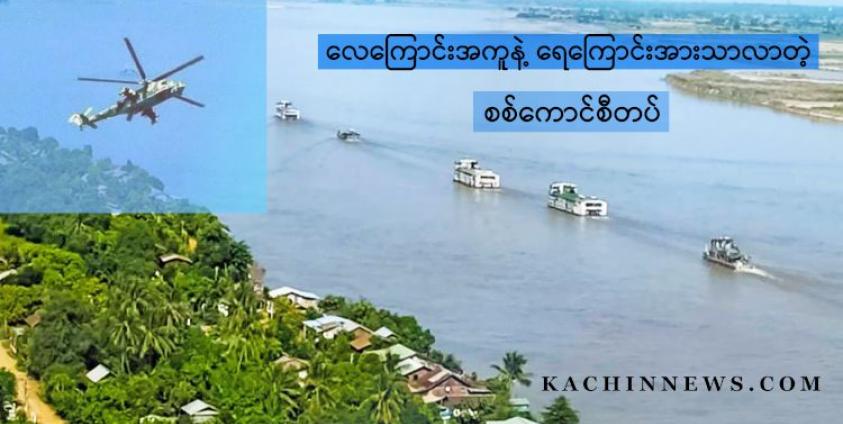To escape the relentless ambushes of resistance forces, the regime has resorted to sending its soldiers across the Irrawaddy River through the Sagaing Region to northern Kachin State, having lost control of land routes since late April.
A People’s Defence Force (PDF) officer said the BA needed to send troops, weapons and food rations to Kachin State to cross Sagaing. However, it is very difficult for them to cross this area by land as they are often attacked. On the river, things are different. “We fired a missile at the flotillas near Katha, but it was ineffective because their ships were traveling in the middle of the river” and out of range, he said. “We have no weapons to sink their ships and they know it.”
However, the Kachin Independence Army and the PDF claimed some lives when they attacked six ships travelling from Mandalay to Bhamo on 18 August.
Since September, jet fighters from Mandalay and warships from the Light Infantry Battalion 309 have been protecting the flotillas on the river. “The gunships fly low and I think we can attack them with machine gun fire. But we don’t because then they would attack civilians and cause enormous suffering,” the source explained.
According to the PDF, the BA sent cargo ships twice between January and July and three times between August and October to transport food rations from Sagaing to Kachin State.
In mid-October, it sent five ships from Mandalay with troops and supplies, which were used to transport passengers before the coup. These ships were guarded by two military vessels armed with artillery and machine guns. After resistance groups attacked them near Katha in Sagaing, the combat ships took the forward and rear positions and all of the vessels reached Bhamo in Kachin State on 25 October.
According to a Kachin People Defence Force (KPDF) officer, BA soldiers guarding the ships sometimes beat and kidnap civilians on the riverbank and burn their homes. They also fire artillery indiscriminately at villages from the ships. “That’s why it’s difficult to attack them, they don’t care what happens to the people.”
The attacks prevent civilians from cultivating their farms, and both people and their livestock are killed by shelling. This year, six people, including two children under 12, were killed by Burmese shells fired along the Irrawaddy River in Kachin State.
The regime has attacked the river villages of Moetar Lay, Yay Ni, Tok Gyi, Ahtet Thanpaya Kon, Ahtet Wel Gyi, Mel Hin, Min Leh, Thasi, Kon Tha, Min Kyaung Kon, Sintai Kon, Tha Hpan Dawnt, Sitt Kon, Bant Bwe, Don Awt, Thit Phyu Kon and Ku Lway Yway. Most of the residents have fled their homes.
Before switching to the river, the army sent fuel to Kachin State via the Shwebo – Indaw – Myitkyina – Htigyaing roads.
As fighting in Sagaing and parts of Kachin State continues to escalate and the army uses waterways to send its soldiers to the battlefield, it relies on air support to overcome the guerrilla warfare of the resistance fighters. This also seems to apply to the fighting in the rest of Burma.
“The air force is their main strength. But we’ll try to stop their military ships on the river,” the KPDF officer said.
In a 2022 report, the UN Special Rapporteur on the situation of human rights in Burma has called for an arms embargo because of the regime’s airstrikes on civilian villages. In a recent statement, the UN said an airstrike on a concert in Hpakant last month appeared to be another example of “excessive and disproportionate use of force by security forces against unarmed civilians”.







